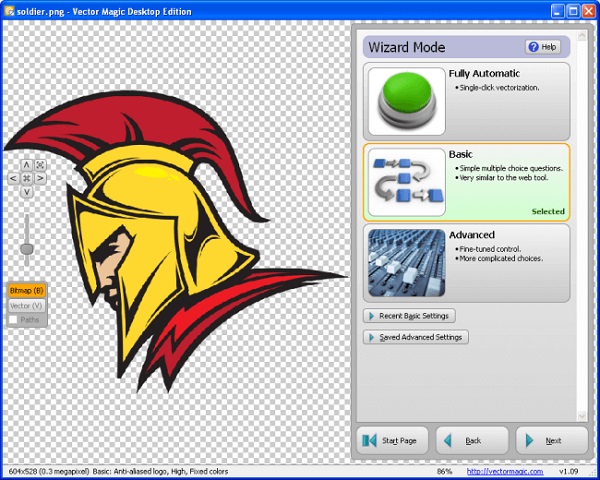

Triple of RGB values is associated with each pixel location. Lookup table) will result in an array of shape (ny, nx, 3) where a (or any integer type so long as values are with the bounds of the Such an array with an image with shape (ny, nx) with dtype=np.uint8 The lookup table could have a shape (nlookup, 3). Lookup table where we want to map the values of an image into RGB triples forĭisplay. This difference is the most important thing to remember aboutĪ real-life example of where advanced indexing may be useful is for a color Length of the expanded selection tuple is x.ndim. There are some tools to facilitate the easy matching of array shapes withĮllipsis expands to the number of : objects needed for the See Dealing with variable numbers of indices within programs
#VECTOR MAGIC 1.15 CODE#
ThisĬan be useful for constructing generic code that works on arrays For example, x can also be implementedĪs obj = (slice(1, 10, 5), slice(None, None, -1)) x. X = value must be (broadcastable to) the same shape asĪ slicing tuple can always be constructed as objĪnd used in the x notation. You may use slicing to set values in the array, but (unlike lists) youĬan never grow the array. The above is not true for advanced indexing. (with all other non- : entries replaced by :). Non- : entry, where the non- : entries are successively taken Tuple, acts like repeated application of slicing using a single Then the returned array has dimension N formed byĬoncatenating the sub-arrays returned by integer indexing ofīasic slicing with more than one non- : entry in the slicing P-th entry which is a slice object i:j:k, If the selection tuple has all entries : except the Then the returned object is an array scalar. In particular, a selection tuple with the p-thĮlement an integer (and all other entries :) returns theĬorresponding sub-array with dimension N - 1. shape (2, 3, 1) > x array(,, ]])Īn integer, i, returns the same values as i:i+1 except the dimensionality of the returned object is reduced byġ. Obtained by dividing j - i by k: j - i = q k + r, so that \(m = q + (r\neq0)\) and q and r are the quotient and remainder

Index values i, i + k, …, i + (m - 1) k where This selects the m elements (in the corresponding dimension) with J is the stopping index, and k is the step ( \(k\neq0\)). The basic slice syntax is i:j:k where i is the starting index, Per-dimension basis (including using a step index).

The standard rules of sequence slicing apply to basic slicing on a To the large original array whose memory will not be released untilĪll arrays derived from it are garbage-collected. NumPy slicing creates a view instead of a copy as in the case ofīuilt-in Python sequences such as string, tuple and list.Ī small portion from a large array which becomes useless after theĮxtraction, because the small portion extracted contains a reference Interpreted as counting from the end of the array ( i.e., ifĪll arrays generated by basic slicing are always views The valid range is \(0 \le n_i < d_i\) where \(d_i\) is the Python, all indices are zero-based: for the i-th index \(n_i\), Scalar representing the corresponding item. The simplest case of indexing with N integers returns an array EllipsisĪnd newaxis objects can be interspersed with these as Integer, or a tuple of slice objects and integers. (constructed by start:stop:step notation inside of brackets), an Basic slicing occurs when obj is a slice object Slicing and striding #īasic slicing extends Python’s basic concept of slicing to Nĭimensions. Unlike Fortran or IDL, where the first index represents the most Index usually represents the most rapidly changing memory location,


 0 kommentar(er)
0 kommentar(er)
